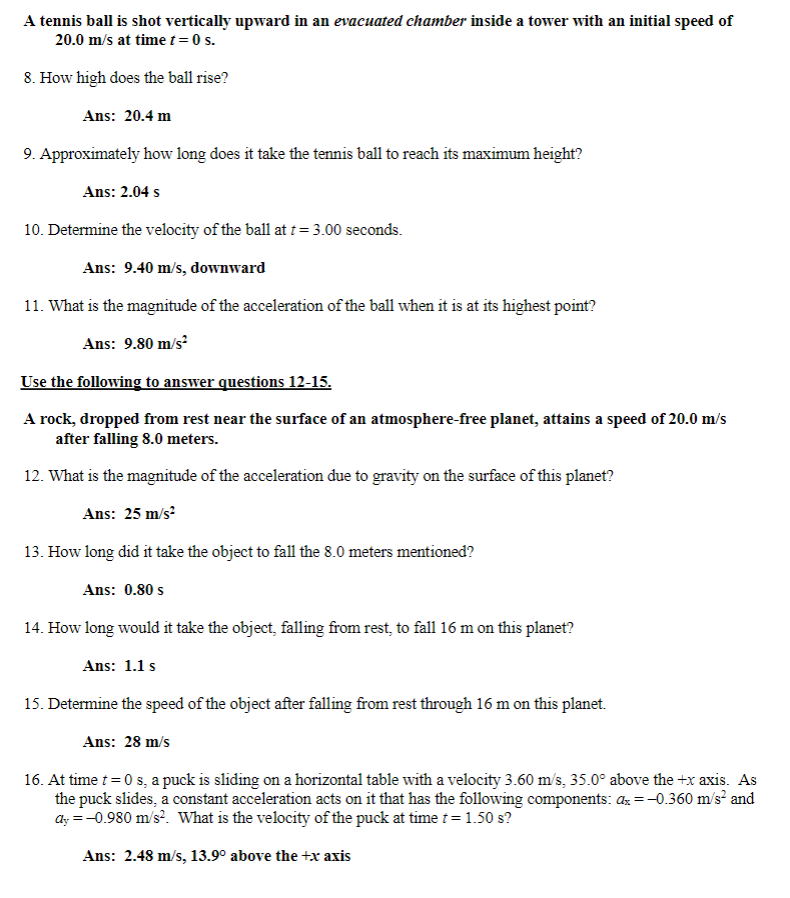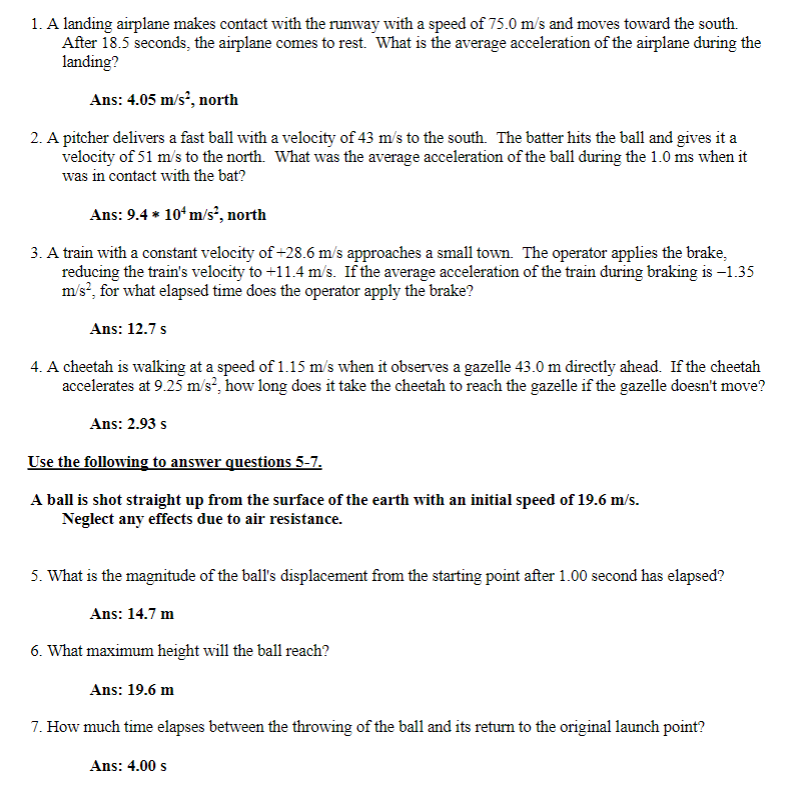A tennis ball is shot vertically upward in an evacuated chamber inside a tower with an initial speed of 20.0 m/s at time t=0 s. 8. How high does the ball rise? Ans: 20.4 m 9. Approximately how long does it take the tennis ball to reach its maximum height? Ans: 2.04 s 10. Determine the velocity of the ball at t = 3.00 seconds. Ans: 9.40 m/s, downward 11. What is the magnitude of the acceleration of the ball when it is at its highest point? Ans: 9.80 m/s²
Displacement, Velocity and Acceleration
In classical mechanics, kinematics deals with the motion of a particle. It deals only with the position, velocity, acceleration, and displacement of a particle. It has no concern about the source of motion.
Linear Displacement
The term "displacement" refers to when something shifts away from its original "location," and "linear" refers to a straight line. As a result, “Linear Displacement” can be described as the movement of an object in a straight line along a single axis, for example, from side to side or up and down. Non-contact sensors such as LVDTs and other linear location sensors can calculate linear displacement. Non-contact sensors such as LVDTs and other linear location sensors can calculate linear displacement. Linear displacement is usually measured in millimeters or inches and may be positive or negative.
could you walk me through each problem and explain to me how we got to the answer
i would be really greatful if u did your writing explanation on paper:)


Trending now
This is a popular solution!
Step by step
Solved in 4 steps









